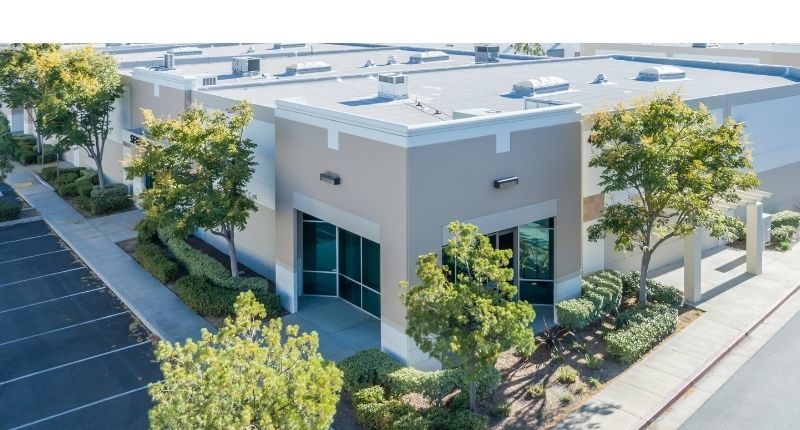- Commercial property investment will be a major force in 2022 for 'mum and dad' investors
- The pandemic has added a new element to selecting commercial investments with potential
- Depreciation benefits for commercial investment are more accessible than for residential property
I love a surfing analogy in a headline. Hell… anything that helps up my ‘cool quotient’ after all these years as a quantity surveyor is more than welcome.
So, the chance to waffle on about catching the rising swell of interest in commercial property investment suits me fine. Here’s why I say paddle hard and take the drop! Gnarly!
OK, enough already. I’m quickly moving from cool to fool.
But in all seriousness, I think there’s good reason why commercial property is primed to be an investment worthy of your time this year – and it includes a bonus in comparison to residential investment that not many people know about.
Read on and all will be revealed…
Why always residential?
Whenever we collectively discuss property investment in Australia, residential is almost always the primary topic of conversation.
This is fair enough I suppose. Most Aussie investors obviously own houses or units. It’s an easy way to enter the landlord space.
And while this long tradition of residential will continue to dominate, I’d like to give commercial its due. That’s because I truly believe commercial property investment will hit it straps this year.
Reasons to be commercial in 2022
When you break the current situation down, there’s myriad reasons why commercial investment will be the ‘new black’ for smart Aussie landlords.
Strong yields
After the extraordinary run of capital growth achieved across our largest residential markets in 2021, in 2022 that growth has attenuated in some centres. A rise in listing numbers, and some trepidation about interest rates, all feed into this narrative.
In these circumstances it’s not unusual to see investors turn to cashflow assets. The security of greater-than-residential incomes that commercial delivers help owners comfortably service loans and sleep soundly at night.
Positive cashflow
Hand in hand with high yields is the relative ease by which positive cashflow can be achieved via commercial rather than residential.
Firstly, we remain in a low interest rate environment and despite indications there could be a rise this year, no one expects increases to be substantial. Low interest rates coupled with high relative yield quickly add up to neutral or positive cash flow – a gold standard for investors needing to hold their assets for the long term.
The other cashflow benefit in commercial is the nature of leases. Secure the right tenant under the right agreement, and you’ll be on a winner. Not only do leases tend to run for years at a time, but outgoings are generally paid by the tenant, not the landlords.
Wouldn’t you love these sorts of terms on your investment house or unit?
The pandemic filter
The pandemic fallout from the past two years has identified what the most flexible and resilient business models are.
Businesses capable of utilising adaptable space for their operations had a better chance of surviving and thriving. For example, hospitality establishments that could quickly switch from in situ dining to online and delivery-based production. There was also a rush on industrial assets with good storage facilities.
The point here is as we progress into 2022, there’s more certainty about what sorts of tenants can endure the tough times, and the types of properties they’re looking for. This is exactly the commercial real estate you should be seeking.
Businesses reopening
Along with post-pandemic commercial resilience is the realisation that businesses are now looking to reopen after a long period of hibernation.
Sure, not all have survived, but those that had the wherewithal to weather shutdowns are well positioned to get their operations revved up.
As activity increases, so too will demand for well-placed commercial property.
The one commercial advantage no one talks about…
There is another substantial upside commercial property has over residential.
Legislation introduced in May 2017 brought about changes to depreciation benefits for residential property investors.
For residential properties purchased after 7.30 pm on 9 May 2017 (how specific is that!), depreciation deductions can only be applied to items of Plant and Equipment (P&E) that have not been “previously used”. So removeable items like drapes, blinds, air conditioners and carpets that are not new can no longer be depreciated for tax purposes.
This change has removed an advantageous chunk of tax depreciation for many residential landlords.
But the rule change does not apply to commercial assets. Their second-hand P&E is still depreciable. I think this element will convince some well-informed investors to steer away from the residential space and look toward commercial property.
Mark my words, we are heading into a golden age for commercial assets. Just be certain when investing that you take advantage of all the deductibles to maximise your net cashflow.
It could mean the difference between holding the asset long term with plenty of buffer or stressing out about those monthly mortgage repayments.
~~
Before making any decisions, please do your own independent research, taking into account your own situation. This article does not purport to provide financial, legal or investment advice. See our Terms of Use.








